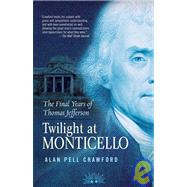
Note: Supplemental materials are not guaranteed with Rental or Used book purchases.
Purchase Benefits
What is included with this book?
| Prologue: "I Shall Be for Ever at Ease" | p. xv |
| Morning and Midday | |
| A Society of Would-be Country Squires | p. 3 |
| An Upcountry Prince | p. 8 |
| The Education of a Philosopher | p. 14 |
| The Young Revolutionary | p. 17 |
| The Crucible of Revolution | p. 20 |
| Whence He Might Contemplate the Whole Universe | p. 24 |
| The Hated Occupations of Politics | p. 26 |
| The Revolutionary Takes Command | p. 33 |
| In a State of Almost Total Incapacity | p. 41 |
| Late Afternoon and Sunset | |
| A Prisoner Released from His Chains | p. 55 |
| Elevated Above the Mass of Mankind | p. 63 |
| When I Expect to Settle my Grandchildren | p. 70 |
| The Shock of an Earthquake | p. 78 |
| Old Friends Reunited | p. 83 |
| At War Again | p. 91 |
| This Enterprise Is for the Young | p. 98 |
| When I Reflect That God Is Just | p. 105 |
| A Library for "the American Statesman" | p. 110 |
| Jeff Randolph Takes a Wife | p. 113 |
| The Realm of "Sobriety and Cool Reason" | p. 117 |
| To Witness the Death of All Our Companions | p. 123 |
| The Eternal Preservation of... Republican Principles | p. 128 |
| The Indulgent Patriarch | p. 134 |
| The "Yellow Children" of the Mountaintop | p. 139 |
| Something Very Great and Very New | p. 150 |
| Struggling "All Our Lives with Debt & Difficulty" | p. 157 |
| Blood in the Streets of Charlottesville | p. 164 |
| Fire, Sickness, Drought, and Storm | p. 170 |
| A Philosophe's Faith | p. 182 |
| We Shall Have Every Religious Man in Virginia Against Us | p. 190 |
| The Death Knell of the Union | p. 194 |
| The "Hideous Evil" of Slavery | p. 197 |
| "Ah, Jefferson!" "Ah, Lafayette!" | p. 201 |
| More Than Patience Could Endure | p. 208 |
| Take Care of Me When Dead... | p. 213 |
| An Inspiration from the Realms of Bliss | p. 223 |
| I Have Given My Whole Life to My Country | p. 227 |
| Is It the Fourth? | p. 234 |
| Epilogue | p. 247 |
| Acknowledgments | p. 265 |
| Notes | p. 267 |
| Index | p. 311 |
| Illustration Credits | p. 321 |
| Table of Contents provided by Ingram. All Rights Reserved. |
The New copy of this book will include any supplemental materials advertised. Please check the title of the book to determine if it should include any access cards, study guides, lab manuals, CDs, etc.
The Used, Rental and eBook copies of this book are not guaranteed to include any supplemental materials. Typically, only the book itself is included. This is true even if the title states it includes any access cards, study guides, lab manuals, CDs, etc.
Excerpted from Twilight at Monticello: The Final Years of Thomas Jefferson by Alan Pell Crawford
All rights reserved by the original copyright owners. Excerpts are provided for display purposes only and may not be reproduced, reprinted or distributed without the written permission of the publisher.